Key takeaways
- Tattoo designs are a blend of personal significance and cultural symbolism, requiring a deep understanding of meaning beyond mere aesthetics.
- Effective sketching involves breaking down complex designs into basic shapes and ensuring they flow naturally with the body’s contours.
- Adapting sketches to tattoos necessitates preserving the essence of the design while adjusting for the skin’s unique characteristics, often enhancing precision in line work.
- Successful tattooing hinges on patience, effective communication with clients, and learning from mistakes, fostering growth as an artist.
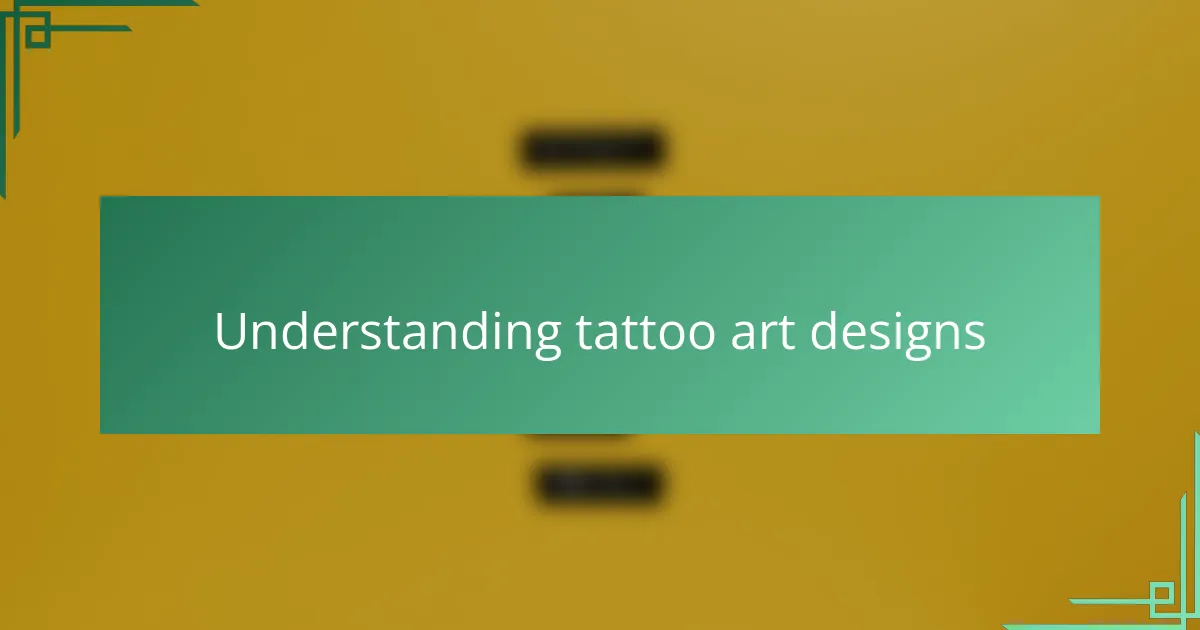
Understanding tattoo art designs
Tattoo art designs are more than just images on skin; they are stories, memories, and expressions captured in ink. When I first started, I realized that understanding the meaning behind each design was as important as the sketching itself. Have you ever wondered why a simple symbol can evoke such strong emotions?
Each design carries cultural layers and personal significance, which makes the creative process both fascinating and challenging. I found myself diving deeper into symbolism, color meanings, and style variations to ensure every tattoo resonated authentically with the wearer. This deeper knowledge transformed my approach from mere drawing to meaningful art creation.
Sometimes, a single line or shade can completely change the vibe of a tattoo. I’ve learned that mastering these subtle details is key to creating designs that don’t just look good but feel alive. Isn’t that what good tattoo art is really about—bringing something on paper to life on skin?
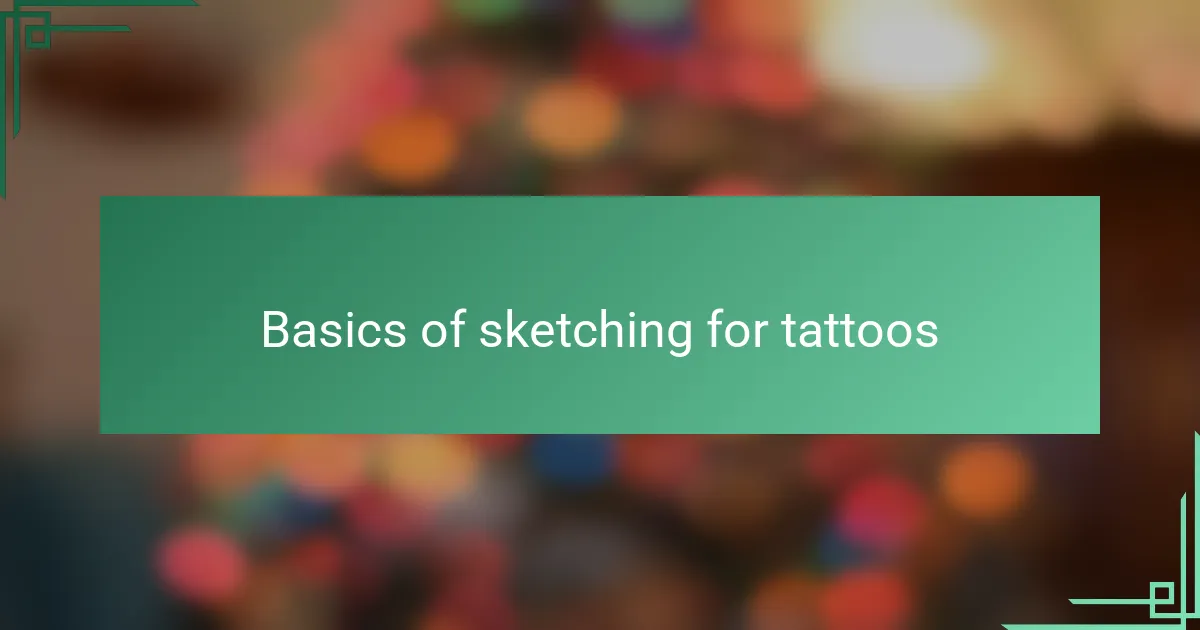
Basics of sketching for tattoos
Sketching for tattoos isn’t just about putting lines on paper; it’s about capturing the essence of an idea before it becomes permanent art. When I first picked up my pencil, I quickly realized that starting with basic shapes and smooth contours helped me build a solid foundation. Have you ever tried breaking down a complex design into simple forms? It makes the entire process feel less overwhelming and much more manageable.
I also learned that working lightly with the pencil at first allowed me to make changes without fear, almost like preparing the canvas for the real artwork. There was a time I ruined a delicate sketch by pressing too hard, and that mistake taught me patience and control. You don’t want to be afraid of erasing; it’s part of the creative journey.
Another key aspect I discovered was focusing on the flow and balance of the sketch. A tattoo has to sit naturally on the body, so sketching with movement in mind is crucial. I often asked myself, “Does this line follow the skin’s natural curves?” It’s a small question with a huge impact, and once I paid attention to it, my designs started to feel much more alive.
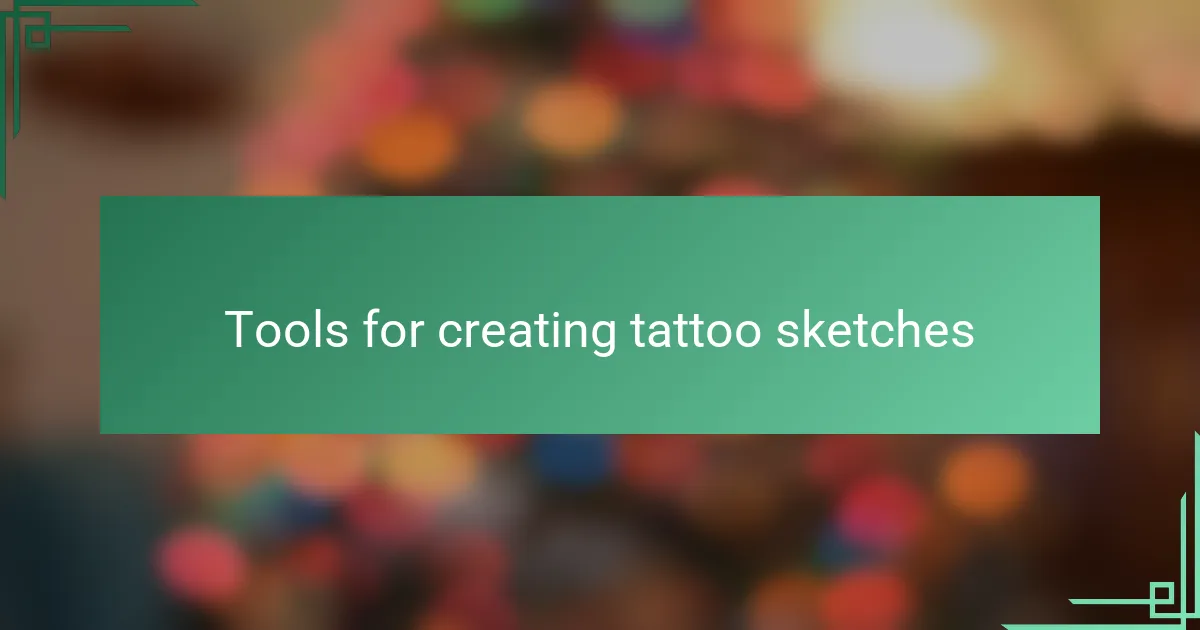
Tools for creating tattoo sketches
When I first began creating tattoo sketches, my go-to tool was a simple set of graphite pencils. I found that having different grades, from soft to hard, gave me the control I needed to play with shading and fine details. Have you ever noticed how a softer pencil can almost whisper in your sketch, while a harder one speaks louder with sharper lines? That range was essential for me to bring my ideas to life on paper before they became skin art.
Besides pencils, I quickly realized that having quality erasers was just as important. A kneaded eraser became my trusted companion—it allowed me to lift graphite gently without damaging the paper. There was a moment when a stray line almost ruined an entire design, but thanks to that eraser, I could fix it without losing the flow. Isn’t it reassuring to know that your tools can catch your mistakes and help you refine your vision?
Lately, I’ve also started using digital tablets for sketching, which opened a whole new world of possibilities. Being able to zoom in on tiny details or undo a stroke with a click made the process feel less intimidating and more experimental. Have you ever tried switching between traditional and digital tools? For me, blending both has enriched my creative workflow and helped me push boundaries I never thought possible.
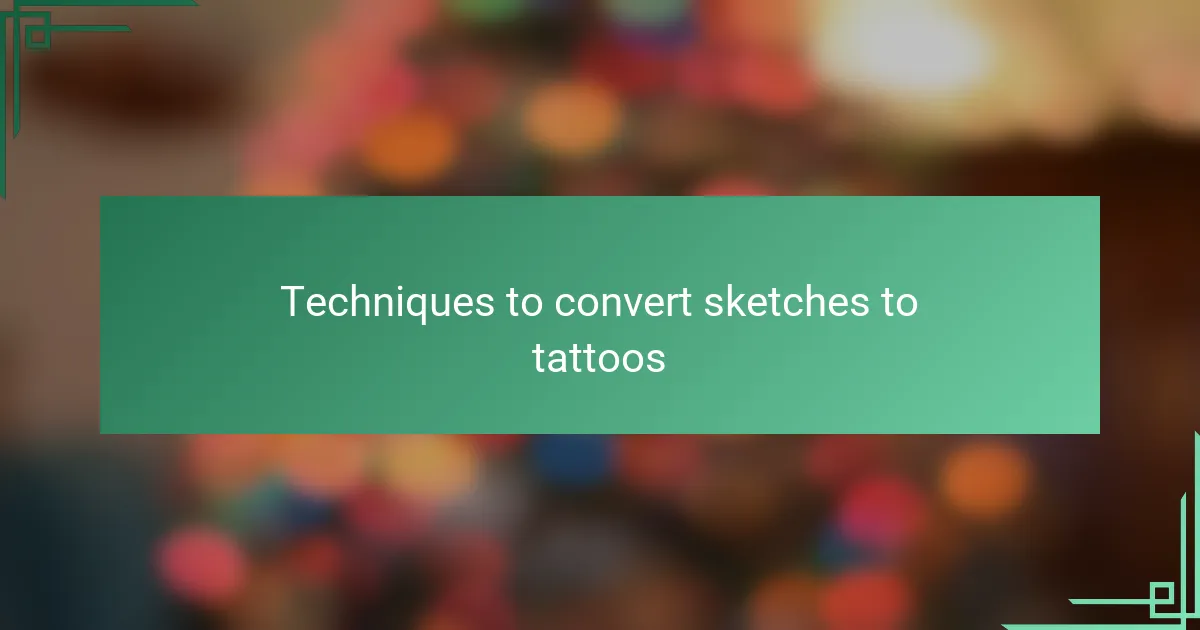
Techniques to convert sketches to tattoos
Transferring sketches to tattoos demanded more than just tracing; I had to learn how to preserve the design’s soul while adapting it to the skin’s unique canvas. One technique I found invaluable was creating a stencil from my sketch—this step felt like a bridge between paper and skin, giving me a clear roadmap. Have you ever noticed how a stencil can suddenly make a delicate sketch seem more tangible, almost alive before the needle even touches the skin?
Shading and line work had to be carefully reconsidered during the transfer process. I realized that some pencil details didn’t translate well into tattoo ink, so simplifying and boldening certain lines became crucial. It was a bit of trial and error at first—sometimes a fine line would blur or disappear on skin—but refining this taught me how to balance precision with practicality in my designs.
Another technique that transformed my workflow was switching from freehand sketching directly on the skin to digitizing my sketches for adjustments. Using a tablet allowed me to flip, resize, and tweak elements until the composition felt just right for the body’s contours. Have you ever played around with digital tools to perfect a tattoo design? For me, this step turned uncertainty into confidence, knowing the final tattoo would honor the original sketch while fitting flawlessly on the skin.
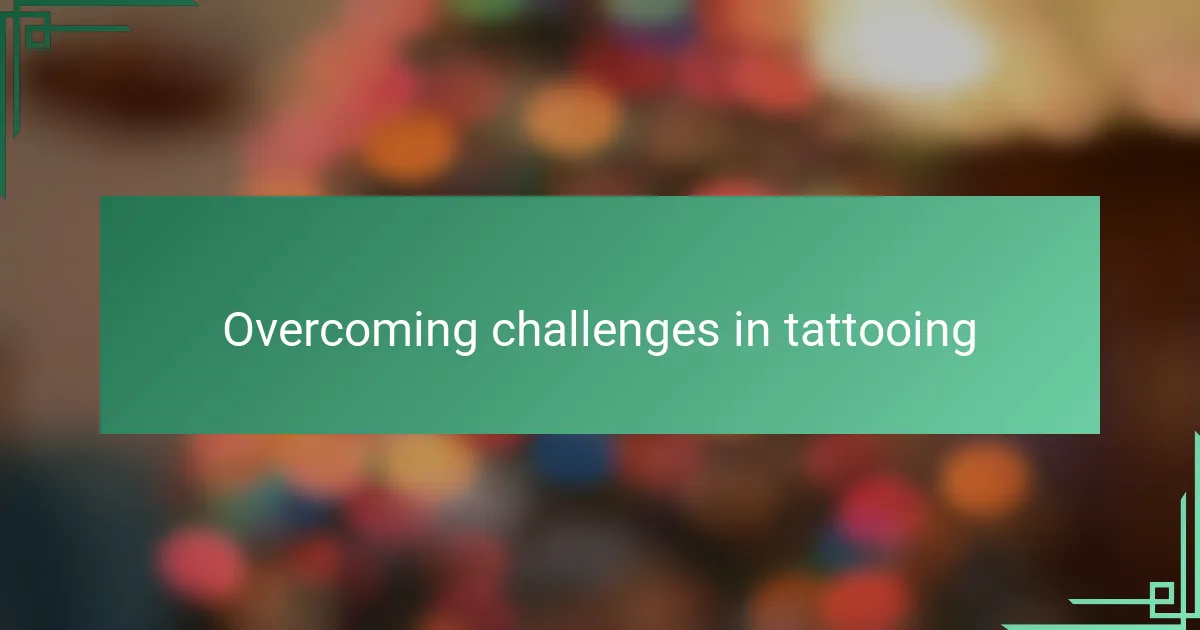
Overcoming challenges in tattooing
Challenges in tattooing often caught me off guard, especially when transitioning from paper to skin. I remember the frustration of seeing a perfect sketch lose its sharpness once inked. Has that ever happened to you—when what looked flawless on paper suddenly feels off on the body?
One hurdle that stood out was mastering the pressure and speed of the tattoo machine. Too much pressure and the ink would bleed; too light, and the lines faded quickly. It took countless hours of practice before I felt any sense of rhythm, and honestly, that struggle made every successful tattoo all the more rewarding.
Then there’s the emotional side—connecting with clients who sometimes envisioned something very different from my sketches. Learning to listen, adapt, and manage expectations challenged me beyond technical skills. Isn’t tattooing as much about understanding people as it is about art? That realization shaped how I approach each piece today.
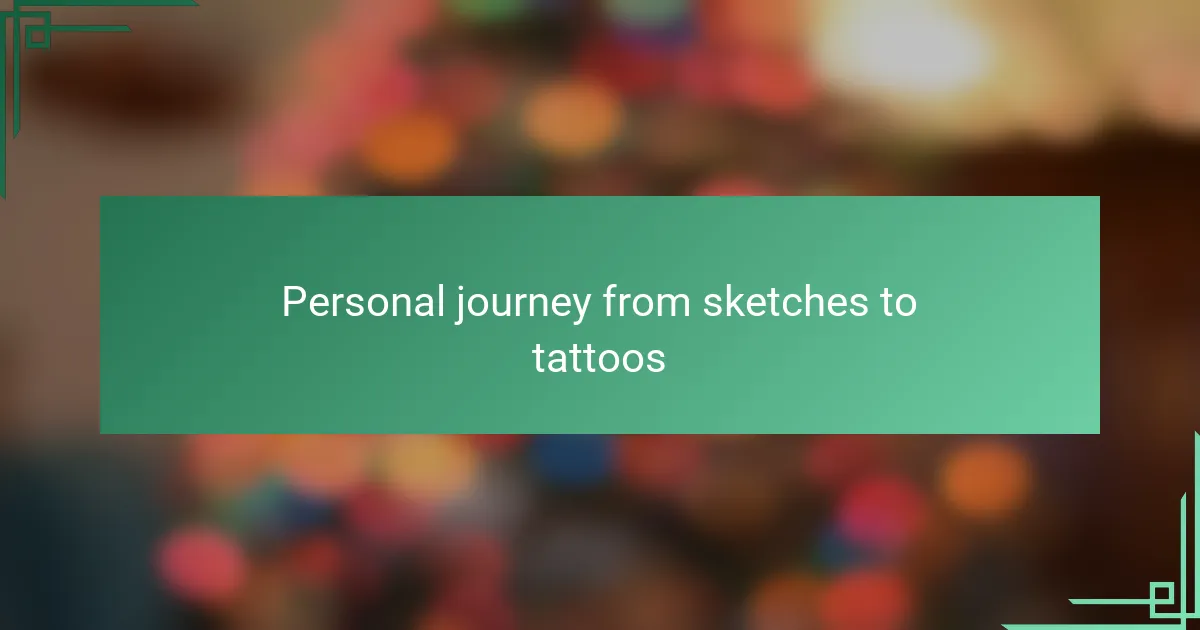
Personal journey from sketches to tattoos
Moving from sketching to tattooing felt like stepping into a whole new world for me. I remember the first time I saw one of my pencil designs come alive on skin—it was thrilling and nerve-wracking all at once. Have you ever experienced that mix of excitement and fear when your idea becomes real? That moment taught me how deeply personal and permanent tattooing truly is.
There were times when my sketches looked perfect on paper but felt awkward once transferred to the body. I had to rethink my approach, learning to anticipate how the skin would affect lines and shading. It wasn’t easy, but each mistake was a lesson in patience and adaptability. Don’t you find that growth often comes from those unexpected bumps?
What surprised me most was how much the journey changed my relationship with my art. Tattooing made my work more intimate and interactive—I wasn’t just drawing anymore; I was collaborating with a person, respecting their story and body. That shift has made every tattoo feel like a shared adventure rather than just a project.
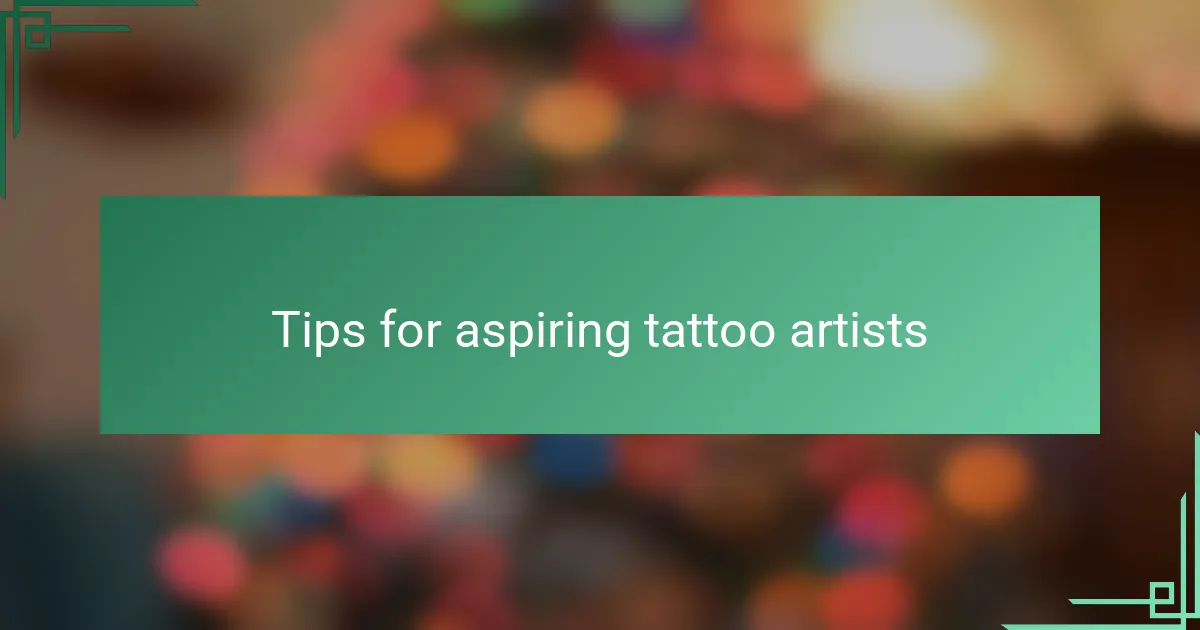
Tips for aspiring tattoo artists
One thing I often tell aspiring tattoo artists is to never rush the learning process. Have you tried rushing through a sketch only to regret it later? Patience in practicing your line work and shading can be the difference between a decent tattoo and a stunning one. I remember spending hours refining a single design before I felt confident enough to start tattooing it.
Listening to your clients is another vital tip. Early on, I sometimes thought I knew best and pushed my ideas without truly hearing what the client wanted. It was a humbling experience when I realized that great tattooing is as much about communication as it is about technique. How often do you pause to really understand your client’s vision before the needle hits the skin?
Lastly, embracing mistakes as stepping stones helped me grow more than anything else. I used to fear messing up a tattoo, but over time, I learned that every imperfection was a lesson in disguise. Have you ever felt discouraged after a challenging tattoo? I did too, but those moments became my most valuable teachers in mastering the craft.


